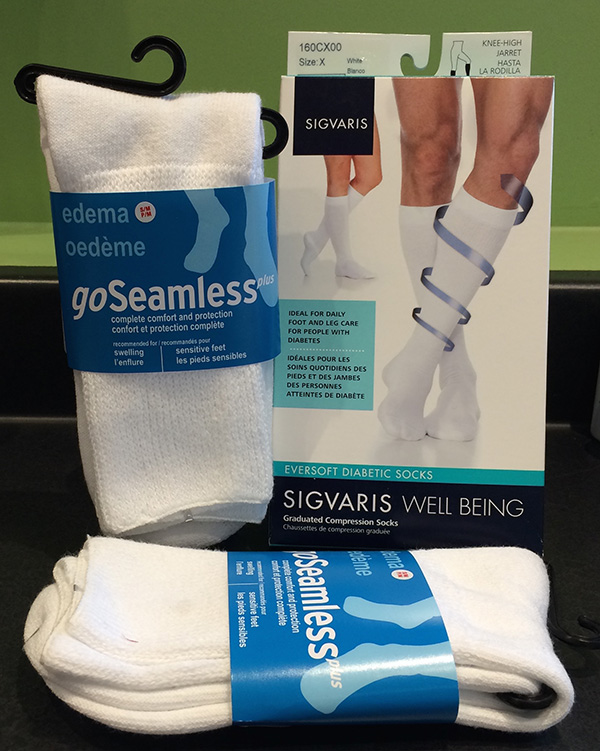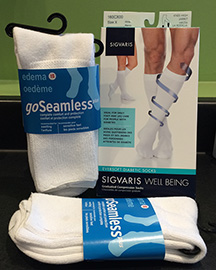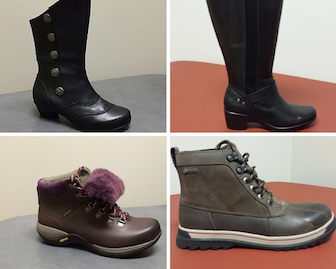There are two main conditions that can affect diabetic feet:
 First, with damage to the nervous system, a person with diabetes may not be able to feel his or her feet properly. Normal sweat secretion and oil production that lubricates the skin of the foot is impaired. These factors together can lead to abnormal pressure on the skin, bones, and joints of the foot during walking and can lead to breakdown of the skin and subsequently sores may develop.
First, with damage to the nervous system, a person with diabetes may not be able to feel his or her feet properly. Normal sweat secretion and oil production that lubricates the skin of the foot is impaired. These factors together can lead to abnormal pressure on the skin, bones, and joints of the foot during walking and can lead to breakdown of the skin and subsequently sores may develop.
The second issue is that damage to blood vessels and impairment of the immune system can make it difficult to heal these wounds on diabetic feet. Because of the poor blood flow, antibiotics cannot get to the site of the infection easily.
The best treatment for the foot issues is prevention.
- Control your blood sugar as this is the only way to prevent all of the diabetic complications.
- Regular Foot Exams: Diabetics should get into the routine of daily foot self-examinations and also after any foot trauma, no matter how minor.
- Foot Care: Proper foot care for diabetics is very important. Wear seamless socks made of materials that wick moisture away from your feet.
- Soles in Motion has a foot care nurse that provides diabetic foot care can be a great resource to show you how to properly care for your feet and educate you about ways to prevent serious problems.
- Proper Footwear: Poorly fitting shoes are a common cause of diabetic foot problems.
- Diabetics should wear sturdy, comfortable shoes with socks whenever possible to protect your feet.
- Never walk barefoot, even indoors.
- Always check the insides of your shoes before putting them on.
- Diabetic footwear should have a high, wide toe box; removable insoles to be able to insert orthotics if necessary, rocker soles to reduce pressure in the areas of the foot most susceptible to pain (such as the ball-of-the-foot) and firm heel counters for support and stability.
- Orthotics: For diabetics with flat feet, bunions, corns/calluses or hammertoes you may orthotics to be sure that there is no pressure being placed on certain parts of your feet. By customizing the orthotic to your foot, the insert will provide the best comfort and protection.
- Soles in Motion also specializes in diabetic socks and footwear designed to fit properly.
Soles in Motion offers no obligation assessments with our two Canadian Certified Pedorthists. Call and make an appointment – Education is free!!!



